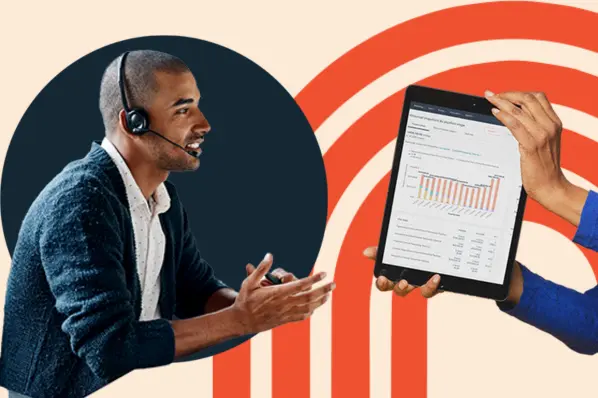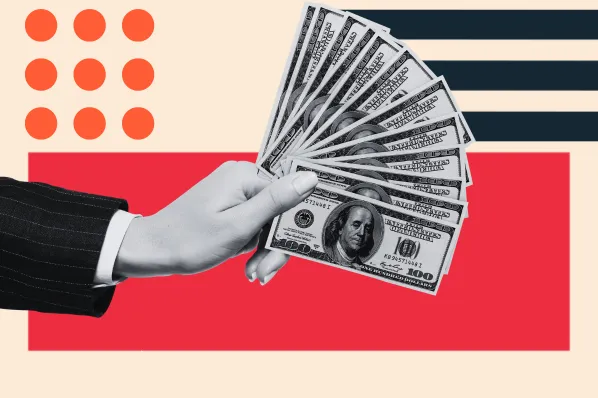What is a sales forecast?
A sales forecast is the amount of revenue a sales team expects to earn over a given period of time, usually a year. It’s calculated using a variety of criteria including, previous years’ data, market analysis, and sales reps’ output estimates. Accurate sales forecasts allow businesses to maintain healthy growth.

Sales forecasting is an important activity for every sales force. Yet, few organizations are happy with the accuracy of their forecasts. Despite spending a lot of time and effort on the task, revenue predictions frequently, well, suck. And no amount of pressure from senior leadership seems to improve the issue.
So, what causes all these terrible forecasts? And, more importantly, what can you do to improve forecasting outcomes? Vantage Point has conducted research into forecasting and discovered two fundamental issues.
Download Now: Sales Conversion Rate Calculator [Free Template]
You’re Using the Wrong Forecasting Framework
Many sales organizations use a forecasting framework that doesn’t reflect the way their salespeople sell. Our research shows 85% of B2B companies use a forecasting approach based on a pipeline of opportunities that are given an estimated deal size, slotted into a stage of the company’s sales process, assigned a likelihood of being won, and forecasted at a future close date.
Setting aside the many problems with how this opportunity forecasting method is executed, let’s focus on a more fundamental issue that cripples many sales forecasts: it’s possible you should be using a forecasting framework other than this classic pipeline forecasting approach.
Our study of 62 global sales organizations discovered 74% believe their forecasts should be based on something other than a pipeline of opportunities; however, only 34% of those same companies use alternative approaches.
If your forecasts are based on a model that isn’t relevant for your sales force, it’s easy to see why your forecasts suck. You’re developing forecasts using data and assumptions that don’t reflect what’s actually happening in the field.
It would be like trying to read this article while moving your eyes from right to left rather than left to right. Similarly, many companies try to shoehorn their forecasts into an opportunity-based model with stages and percentages when it just doesn’t make sense to do so. Unsurprisingly, these forecasts don’t make sense either.
Alternate ways to conduct a revenue forecast
There are at least two other methods of sales forecasting proven to return better results:
- Account level forecasting: Use this if you have a business model where a high number of deals flow from a handful of existing customers.
- Territory level forecasting: Use this if your salespeople cover geographies with dozens or even hundreds of accounts.
So, if you’re using a traditional, opportunity-based forecasting model and suffer from erratic forecasts, consider whether you should be using a different method to develop your forecasts -- one that more closely reflects the selling motion of your sales team. Otherwise, you’ll continue to invest large chunks of time in an activity that will never yield better results. And that sucks worse than the actual forecasts.
You’re Making Random Assumptions
A second issue crippling sales forecasts is random assumptions. Regardless of your forecasting methodology, you need to do some math based on a set of assumptions -- and what those assumptions are matters.
For example, if you base your forecast on a pipeline of opportunities, you must assume a deal size, likelihood of winning, and close date. If these assumptions are way off, your forecast will be as well.
The surprising thing here is sales organizations have plenty of historical data to inform the most likely deal size, win rate, and sales cycle length for a particular type of opportunity. Yet, salespeople are allowed to plug in their best guesses -- as viewed through their optimistic eyes.
I once knew a salesperson who always claimed his outstanding proposals were 75% likely to close. When I asked whether he actually won 75% of his proposals, he responded, “No, probably more like 30%.” Oh, how’s that forecast looking? Let me guess.
If you have historical data to help eliminate the randomness of the assumptions feeding your forecast, use it -- especially if you have a high volume of deals in your forecast.
The law of large numbers dictates the variations in individual deals will average themselves out to the most likely outcome. Sure, that $100,000 proposal might be 75% likely to close on December 31st -- but, probably not.
Tighten up that forecast
There are many factors that influence the accuracy of a sales forecast. If you’re basing yours on the wrong methodology and you’re populating that with faulty assumptions, you’re off to a bad start.
Adding a little rigor to your forecasts will go a long way in improving their value as a communication and planning tool. Everybody wants more accurate forecasts, and everybody spends a lot of time doing it. Some just do it better than others -- by design.

![12 Tactics for Better Sales Forecasting [+5 Forecasting Models to Leverage]](https://blog.hubspot.com/hubfs/sales-forecasting-model_2.webp)

.jpg)
.jpg)
.jpg)



.jpg)
